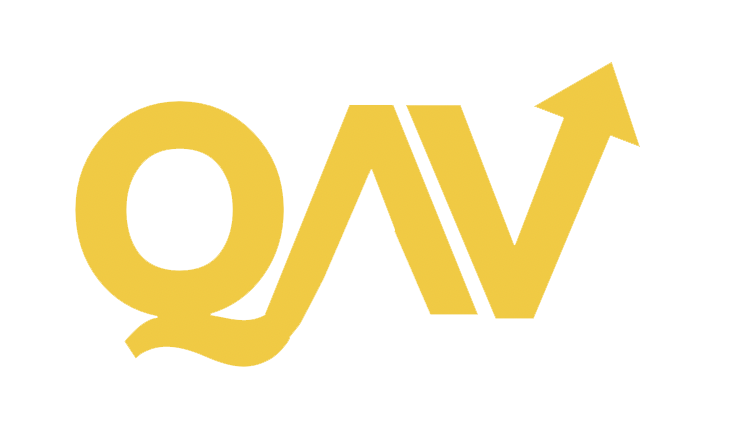FAQ(AV)
Our answers to some common questions.

How long does QAV take to learn/do?
I guess the first part of this question depends on how quickly you want to get up and running with a full portfolio. It also depends somewhat on your level of prior investing experience and comfort with the terminology. For someone like Cameron, with zero experience, it would take longer than someone who has been investing for 20 years.
And I’d break down ‘time’ into two categories – the time it’ll take to learn the process, and the time it takes to actually RUN the process, once you’ve learned it.
LEARNING: As a minimum, I’d allow a few hours to do our QAV Course. That should contain all you need to get started. You should probably do the course with the “simple” version of the checklist and Stock Doctor both open in front of you, so you can be hands-on, plugging data into the sheet and understanding why each data point is important.
DOING: Running a full SD download/analysis can take a few hours the first time you do it, because you have to check the manual data for a lot of stocks (20-30), and that’s the slowest part of the process. But once you’ve done that, you should have a buy list ready to go. After you’ve got a portfolio, the process doesn’t require much time. We just set and forget, until we get an alert from SD that we have to sell something. When that happens (usually only a half-dozen times a year), you’ll need to do a new SD download to work out what to replace it with. But this time, as you’re only looking for a single stock, the process is much faster. You’ll typically only have to do the manual data on a handful of stocks to build a shortlist to buy from. So it might take 15-30 minutes.
If that sounds like too much effort, check out QAV Light instead.
Can I do QAV without Stock Doctor?
You can – but it’s very slow. Here’s a comparison – it takes about 30 minutes to do the analysis for a single stock without SD. But with SD, you can produce a checklist from the entire ASX in few hours. You can certainly learn QAV without SD, but once you’re ready to build a full checklist, SD becomes invaluable.
Why is it called QAV?
QAV stands for QUALITY AT VALUE. Tony’s approach is to use a checklist to find companies that are performing well (quality) but which can also be bought at a discount (value). It’s basically what is usually called “value investing”.
If Tony's so rich, why is he doing this?
Hah! Tony would rather be playing golf. But after ten years being friends with Tony, I eventually smartened up enough to realise I needed to learn more about the basis of Tony’s investing success. As a professional podcaster, I of course decided a podcast was the best way to learn his system. Tony agreed to it because he felt sorry for me and he’s a nice guy. Subscription fees go to cover production costs. These days we have a small team of people helping us produce checklists, transcripts, run the IT, editing, etc.
Do you have an AFSL?
Yes we do, thanks for asking.
Spacecraft Publishing Pty Ltd trading as QAV (“QAV”) (ABN 41 163 119 300) is a Corporate Authorised Representative (CAR 001292718) of MF & Co. Asset Management Pty Ltd (AFSL 520442).
How much capital do you need to make Club worthwhile?
If you are doing QAV Club, you need to factor in a few costs – brokerage, QAV membership and a membership to Stock Doctor (or similar tool). These will probably require an investment of a $250-300 per month (which might be tax deductible, ask your accountant). So over the course of a year, that’s a few thousand. You’d want to factor that into the returns you expect to get from your portfolio. If you’re investing $20,000, and QAV delivers an average 19.5% return pa (ie $3800), that neutralises out the investment, but isn’t giving you a return.
With $40,000 invested you’d expect an average return of $7600 pa, with about half of that going to education and tools, leaving you with roughly a 10% return. But you should be able to get that from an ETF, so it’s not worth the effort, unless of course you really want to learn how to invest.
Anything over that, eg $50K and up, you should be able to expect a better return that you’d normally get from most ETFs or funds.
As for the minimum investment amount, it’s a similar calculation. Ideally you want to keep brokerage as a percentage of your investment to be as low as possible, so that means buying as much as you can. Tony’s rule of thumb is to divide your full capital (or how much you intend to invest over the course of a year if you don’t have it just sitting around) by 20, and buy 20 equal parcels, eg 20 parcels of the same dollar amount of each stock.
QAV LIGHT, on the other hand, has none of the costs apart from brokerage and our monthly fee of $29+GST. So it’s really designed to be suitable to almost everyone. All you need to do is get our emails each week and decide whether or not you want to act on them.
